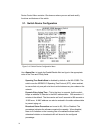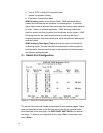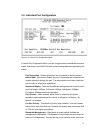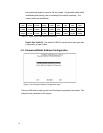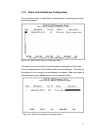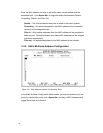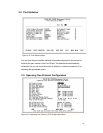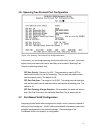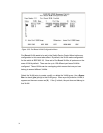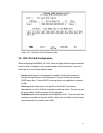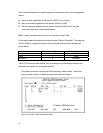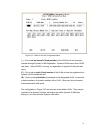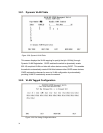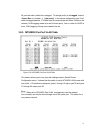30
By default, Spanning Tree is disabled on the MIL-S3580. The switch uses the
IEEE802.1D Spanning Tree Protocol (STP), when enabled, to ensure that only one
path at a time is active between any two nodes on the network. In networks where
there is more than one physical path between any two nodes, STP ensures a single
active path between them by blocking all redundant paths. Having more than one
path between a pair of nodes causes loops in the network, which result in
duplication of messages, leading to "broadcast storms".
As recommended in the IEEE 802.1Q VLAN standard, the MIL-S3580 uses a
single-instance STP, regardless of whether VLANs are configured on the switch.
The Spanning Tree status can be changed with the <Space Bar>. If you enable the
spanning tree protocol, you must complete the Priority and Time fields with
appropriate values. Note that you can choose to leave a menu screen without
applying any changes you had made at any time by pressing <Esc> and then
confirm with <Enter>.
x STP Bridge Priority - The range is 0 to 65535. This range specifies the priority
value used along with the switch’s MAC address to determine which device in
the network is root for all the spanning tree switches. The lower a priority value,
the higher the priority. The default is 32768.
x STP Bridge Max Age - The range is 6 to 40 seconds. This range specifies the
maximum received message age the switch allows for STP information before
discarding the message. The default is 20 seconds.
x STP Bridge Hello Time - The range is 1 to 10 seconds. This is the time
between messages transmitted when the switch is the root. The default is 2
seconds.
x
STP Bridge Forward Delay
- The range is 4 to 30 seconds. This is the time
the switch waits before transitioning from the listening to the learning state and
between the learning state to forwarding state. The default is 15 seconds.



